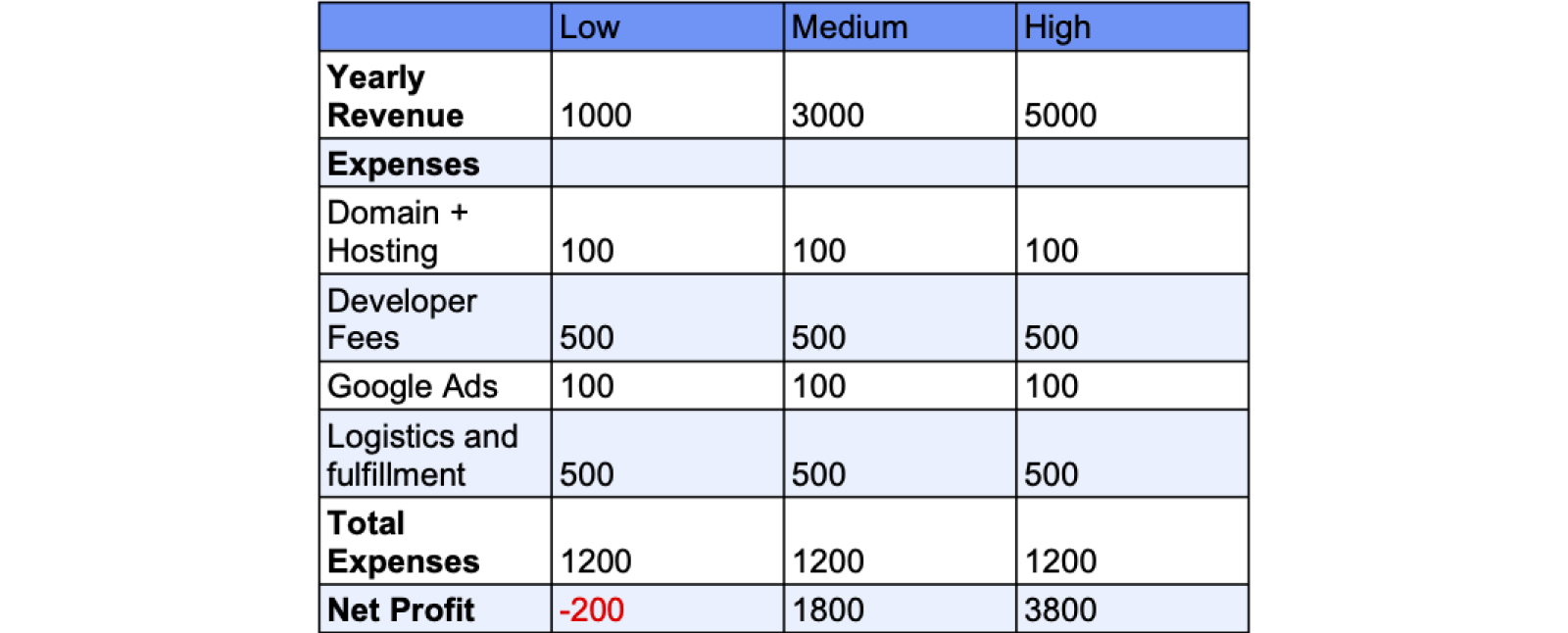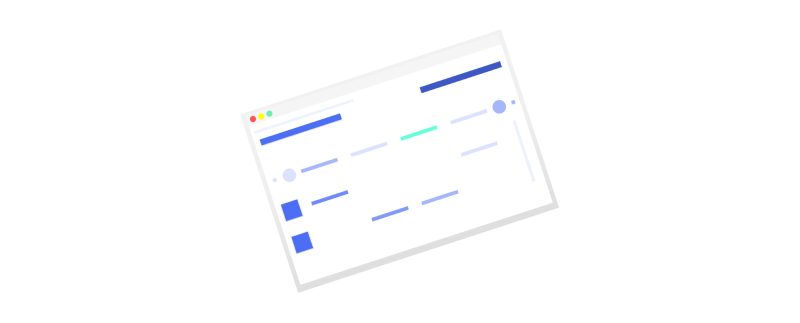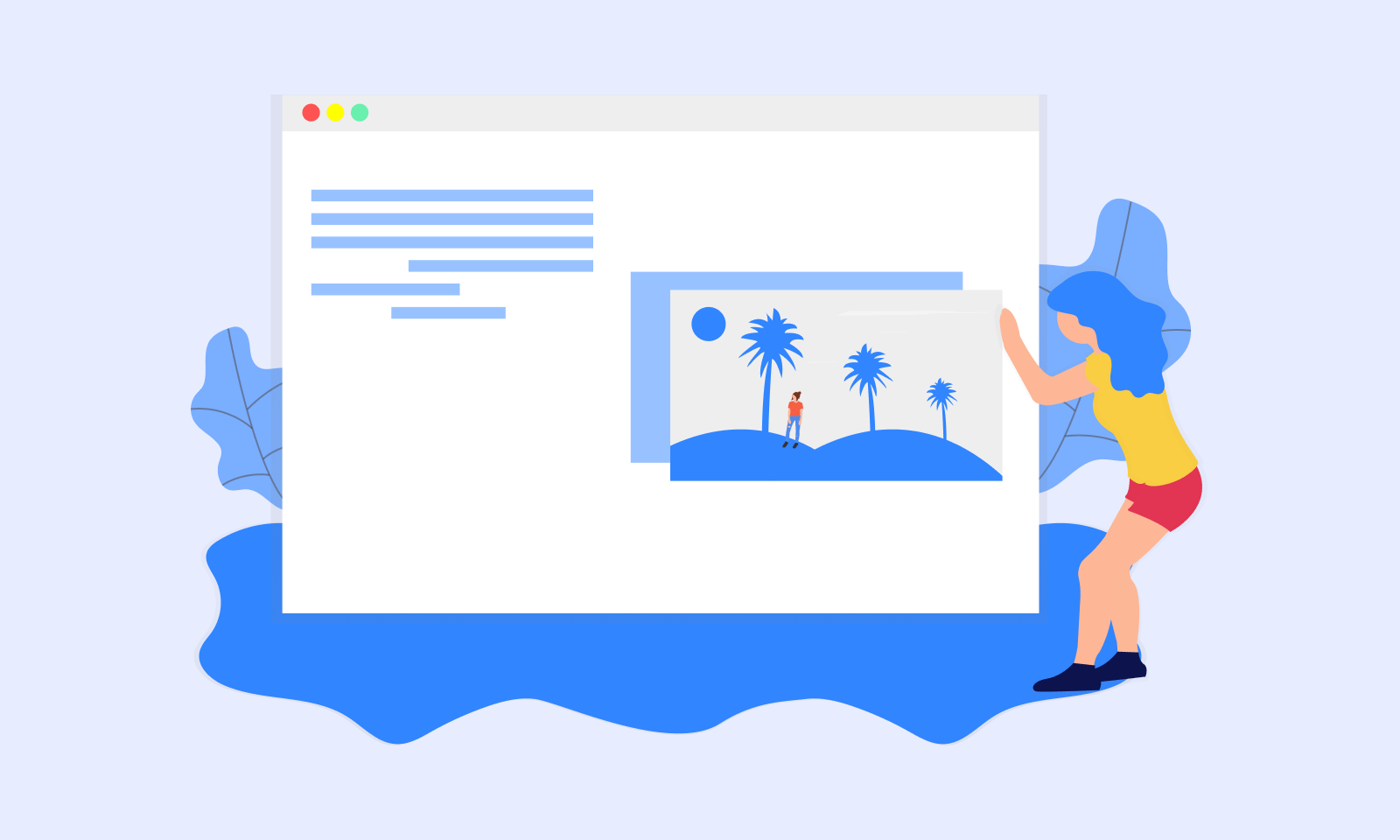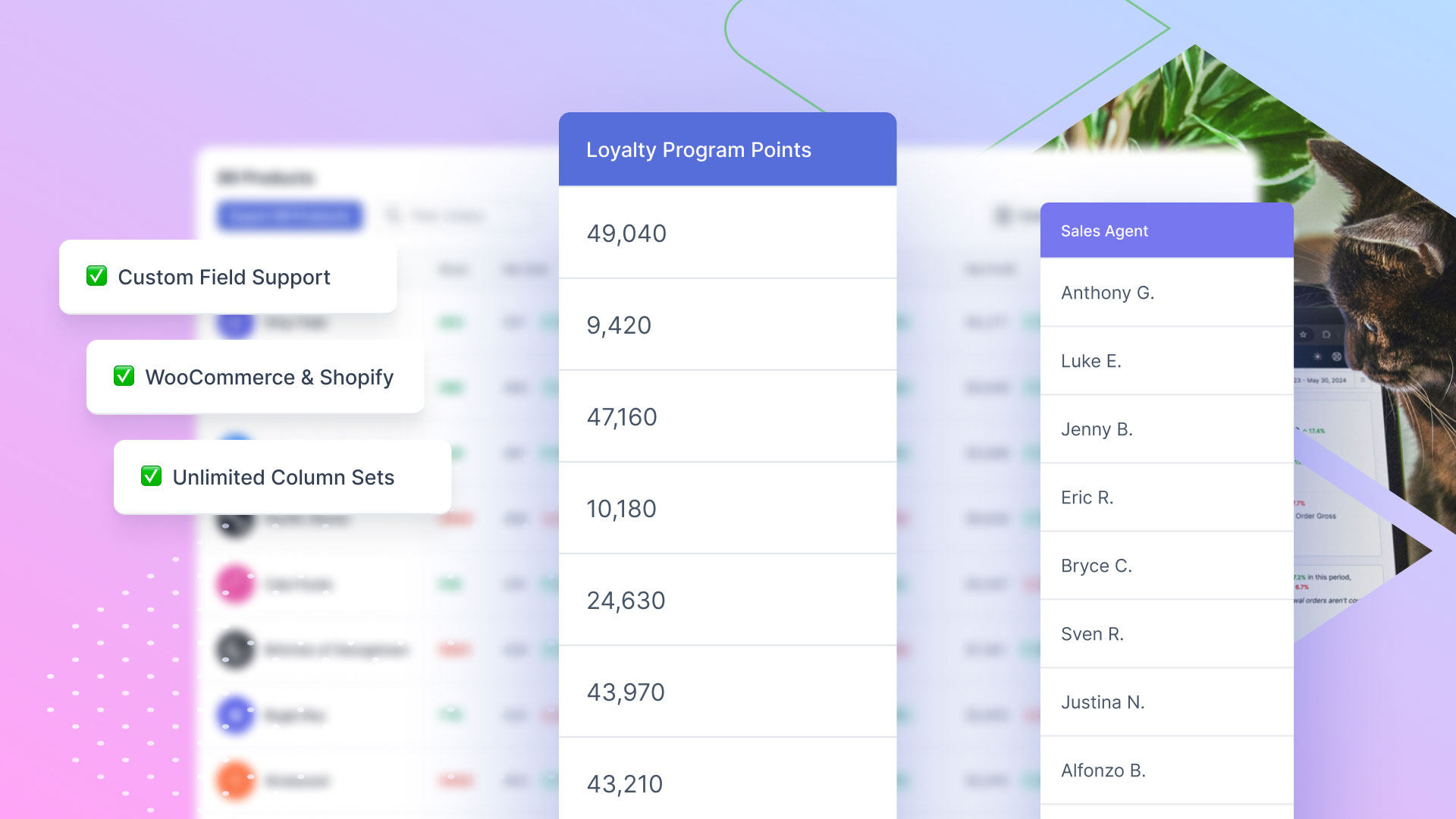2020 marks a monumental point in modern history.
Businesses have been forced to completely pivot — because of you know what — or face significant economic losses and even complete bankruptcy.
For many businesses, either already having an existing eCommerce presence, or quickly pivoting and setting up an online store, has allowed them to weather the storm of a lockdown/recession. eCommerce has enabled them to continue selling their products or services and reach customers outside of their postcode.
So it should be no surprise that from our perspective, eCommerce is as important and relevant as it’s ever been.
The eCommerce website development process is a bit different from the traditional business development process. And if this is your first time doing it, a few tips can go a long way in ensuring your online store is successful. Let’s jump in!
Pick the right product or service

This tip shouldn’t come as a surprise to you as this is also a crucial step in any traditional in-person business as well. However, in eCommerce this is even more important… hear me out.
Let’s say you were to open up a clothing retail store. Your competitors are all the other clothing stores on the street (or within the area). Your actual amount of direct competition will vary depending on the density of your area, but let’s say at worse, you may have 100-200. And if you’re in a mall, this figure might be a few hundred more.
With an eCommerce store, your competitors are every other online clothing store on the internet. This means that there are going to be many other people out there with a similar product to you. As such, picking the right product or service to make sure you stand out is imperative.
If you are drop-shipping products, you better be sure that your prices are cheaper than competitors (otherwise why would someone come to your store?) If you’re selling clothing, make sure you have your finger on the pulse of an upcoming fashion trend, and if it's a subscription, it better be unique — no one wants another subscription service to pay for unless it’s radically going to improve their life (or happiness).
Whatever you choose, make sure you put in the time when researching so that you make the best and most considered decision.
Do the math
.png)
Take the time to think about all your possible expenses. Then look at the potential revenue to be earned from your eCommerce store. Does your revenue less your expenses equal a profit? I know this sounds rudimentary and simplistic, but when starting out, even a simple budget can go a long way.
Start by listing all potential expenses. eCommerce expenses are going to be different to a regular businesses, for example:
Domain registration
Website hosting
Web developers fee
Merchant fees (for example, if you sell on Shopify, you will need to pay them a cut of every sale)
Logistics (storage of stock and fulfilment of your orders)
Google & social media ads
Other software fees
Plus all the other expenses you would expect (manufacturing, wages, business registration etc..)
Then look at how much revenue you could expect to earn. A strategy I think is very helpful when embarking on a new business is to budget for 3 different outcomes, low revenue, medium revenue and high revenue. Then look at the net position each of those scenarios put you in. Something like this:

It’s always best to take a conservative approach in business — plan for the worst and be pleasantly surprised if you end up with the best.
In the above example, we are making a $200 loss for the year. So either make sure you have money in the bank to cover the shortfall, have lending facilities available, or better, cut out some of the expenses (maybe you don’t need a developer and can build v1 of your website on your own).
Pick the name and buy the domain

It’s important to secure your domain name ASAP. Decide on a name early in the planning stages so that you can purchase the domain name right away. There’s nothing worse than having your heart set on a name and the domain being taken. If it’s taken, try a variation of it for the domain (if cbd.com is taken, try getcbd.com etc..).
A few notes on domain names:
If possible, keep SEO in mind when choosing your domain name. So for example, if you are selling CBD gummies, it will be beneficial to have one or both of those words in the domain. I know this isn’t always possible as often the brand name is esoteric and abstract — but if possible, do this, as it will be easier to rank on Google for those terms.
Domain registrars (websites that sell domain names) are the mafia of the internet. They will try to take as much money from you as possible by up-selling you with things you don’t need. A good rule of thumb is to say no to all up-sells (like when you are purchasing airline tickets). In addition, they will offer you a very cheap fee in the first year, and then hike up the prices when you renew. Keep an eye out for this. We recommend Namecheap.
Choose an eCommerce platform and build an MVP

The eCommerce platform market is now flooded with many different options. There are many different takes on the internet about which platform you should choose. But ultimately in our opinion, we would recommend either WooCommerce or Shopify.
Why choose WooCommerce?
Choose WooCommerce if you have a more custom experience you want to offer your customers. For example, a tailored subscription checkout like Scratch’s pet food subscription service.
It is also an established platform built on PHP with a large community of developers. So finding someone to help build your website won’t be a problem.
There are also a huge amount of plugins and themes available to customise the look and functionality of the site. Plus they now have a drag and drop front-end builder for those without the ability to code.
WooCommerce (and WordPress) is also completely free to use and doesn't take any commission from your sales.
Some drawbacks of WooCommerce
WooCommerce sites can become notoriously slow and clunky as you begin to add more plugins to the site.
Its built-in sales reporting system is also a bit lacking (our product Metorik solves this issue though).
The WooCommerce and WordPress UI isn’t very intuitive and can be very a bit tricky at the start to learn. There are better drag and drop platforms out there.
Why choose Shopify?
Shopify is the other big player in the eCommerce space. It is often a popular choice for businesses as it’s easy to set up and start selling. The themes are also clean and simple.
Its backend UI is also a lot cleaner and easier to manage for those starting out. And it also has better built-in reporting than WooCommerce.
Some drawbacks of Shopify
Shopify’s ease of set up and use also comes at a cost. It is much harder to build out a custom solution. We often find subscription businesses choosing WooCommerce over Shopify as Woo’s is more robust.
It also uses its own templating language — Liquid — which makes it a lot harder to find developers compared to PHP developers for WooCommerce.
Finally, Shopify costs money to use as opposed to WordPress and WooCommerce which is free. There is a monthly subscription fee which starts at $29 US/month + a transaction fee on all credit card orders. So if you are on a tighter budget, this might be a dealbreaker for you.
The MVP approach
Whichever platform you choose, make sure you take the MVP approach.
MVP stands for minimal viable product and it’s something that you should aim for when building out your eCommerce store. Whether you build it yourself using a drag and drop builder or contract a developer, ensure you build a product that satisfies the needs of your early customers. Don’t worry too much about building the perfect website on the first go.
You are going to see greater sales by launching the website quicker (and iterating later), rather than spending extra months building the website to the perfect specifications. Plus you may spend the extra time and money building the perfect site, only to realise it’s not what you need after receiving customer feedback post-launch.
Paid ads or organic traffic?

So you launch your store, it’s beautiful and ready to rumble. But there are no visitors coming to your site.
First of all, I’d definitely recommend drumming up some hype before you even launch the website. This can easily be done with a social media presence and running ads on those platforms. Start by posting content of your mission and the products you plan to sell. You can even use this as an opportunity to start building a mailing list before you even launch.
However, once you launch, there are 2 main options you have for online marketing:
Paid Ads
Paid ads are the best way to get traffic to your website right now. The second you run an add on Google, it will show up on the first or second page right away (depending on how high you set your max bids). It can be a bit confusing at first, but there are many great resources to help you started. I’d recommend this video by Sanrtel Media.
Make sure you factor the cost of your ads into your budget — there’s no point of running ads that cost you $20, to only get $10 of sales.
I’d also choose the ad platform carefully. Google is great for capturing customers that have high purchase intent as they are actively typing in the search term. For example “best keyboard for productivity”. When someone clicks on a Google ad, there is a good chance of them following through with the purchase. However, this higher purchasing intent comes at a cost as Google ads are much more expensive to run than social media ads.
Facebook and Instagram ads are much cheaper to run than Google ads. However, people that view your ads will have less purchasing intent. Think about it, a Facebook ad is like a virtual billboard, it’s shown to users when they are scrolling through their news feed. Yes, Facebook has a powerful algorithm which attempts to place the ad in front of the ‘right’ person, but this will never be as accurate as a person actually searching for the product on Google.
It’s this nature that makes social media ads a great option for cheaper products that are likely to be impulse purchased — think fidget spinners.
Organic Traffic (also known as SEO).
I could write a whole post on organic traffic alone; but here are the things you need to know when starting out.
Organic traffic is imperative to any long term success in eCommerce as if you rely solely on paid ads, you will drain your budget very quickly. Organic traffic is free and long term — plus once you start ranking for a certain term, it’s relatively easy to keep ranking with minimal upkeep. But remember, organic traffic is a long-term strategy and it can take 6-12 months (even longer sometimes) to see any progress. Here are some of our tips when starting out:
Keyword research — find the terms that your potential customers will be searching for. For example, our app Metorik is an eCommerce reporting platform, so some of our keywords are: eCommerce Reporting, eCommerce Carts, WooCommerce Subscriptions etc… There are tools to help find these keywords that we will touch on later.
Then make sure you have a page dedicated to each of these keywords on your site. On our site, we have a feature page dedicated to each keyword. Make sure the slug of each site contains the keyword (if possible) and it’s also in the H1 tag. Mention the keyword a few times on the feature page, but don’t overdo it — Google will penalize you.
Blog content! I cannot stress how important this is. Bolster your feature pages with original and interesting content relating to your main keywords. These posts will be the entry point for many of your potential customers. I’ll provide you with some resources for blog content at the end of the post.
Reach out to other websites to get them to link to your website — this is known as backlinks. Backlinks are one of the biggest contributing factors to your rank on Google. A good way of doing this is to offer to guest blog on another website. There are also many blogs you can reach out to that will include you in a post for a fee.
Analyse your sales data
.png)
Once the sales start to trickle in, make sure you have some good reporting software to help analyse your data. You want reports for:
Revenue and Orders.
Refunds.
Products.
New customers and customer retention.
Carts.
Subscriptions (if you sell a subscription product).
If you end up choosing WooCommerce or Shopify, I’m going to recommend our software for this (shameless plug I know). But Metorik specialises in all the above reports (and many more), data segmentation, abandoned cart tracking, and email automation.
It’s important to keep your finger on the pulse of your customers and the products they are purchasing. You can use these reports to drill into the data and to help inform your decisions about which customers to market to and what products to sell.
Don’t forget about customer retention
.png)
Many eCommerce strategies put a large focus on a customer acquisition strategy. And don’t get me wrong, getting new customers is important. However, this can sometimes come at the cost of a solid customer retention strategy.
When you stop and look at the data, customer retention strategy is often cheaper and more effective than acquisition. In fact, acquiring a new customer can cost 5 times more than retaining an existing one. Some sources have that figure going as high as 6-7 times more.
When first launching your store you should be putting time and resources into getting new customers. But when those first customers start to trickle in, you want to have a solid plan to give them the best chance of coming back and making a second purchase.
Post purchase automated follow-up emails are a very cost effective way to do this. An example of some of these emails are:
Following up with a customer after they have purchased a certain product to ask them if they like it.
Following up with a customer that hasn’t ordered in a while.
Following up with a customer who has just cancelled their subscription.
You can use software like Metorik Engage (although there are many other options out there if you don’t use WooCommerce) to create these email automations. Once the customer meets the filters you create, an email will automatically fire.
It’s a real set and forget strategy, as you only need to configure the automation once, and the emails will automatically fire.
Tools and resources to make your eCommerce life easier
.png)
Spend the time creating systems and finding tools that will optimize your workflow.
To help get you started, I’ve compiled a list of some that I find very useful (in no particular order).
General Productivity
Clickup for project management.
Google drive for cloud storage and word processing.
Slack for internal team communication.
Customer communication and marketing
Email Octopus for bulk marketing emails.
Help Scout for managing and responding to customer emails.
Metorik Engage for WooCommerce and Shopify email automation.
Buffer for scheduling social media posts.
eCommerce reporting
Metorik for WooCommerce and Shopify reporting.
Google analytics for tracking website clicks
SEO and content marketing
SERPROBOT for tracking your keyword Google rankings.
Keywords Everywhere for keyword research.
Answer the public for keyword research.
SEMrush for keyword research plus other SEO and PPC research (very expensive).
Resources
eCommerceFuel mailing list for news in eCommerce.
2pm mailing list for new in business and eCommerce.
Backlinko’s definitive guide to Keyword research.
Orbit Media’s guide on how to write a high performing blog post.
Animalz blog and podcast for insightful content on content marketing.
To sum it all up
The eCommerce website development process is made up of more than just the code of the website. There are a lot of different parts that all come together to make the finished product.
And while there are definitely many other things you need to consider, I hope the tips and resources I gave you today will put you in good stead to build a successful eCommerce website. And to sum it all up, remember to:
Pick the right product or service
Do the math
Pick the name and buy the domain
Choose an eCommerce platform and build an MVP
Focus on both paid ads and organic traffic
Analyse your sales data
Focus on customer retention (and not just acquisition).

-1549438730.jpg)




